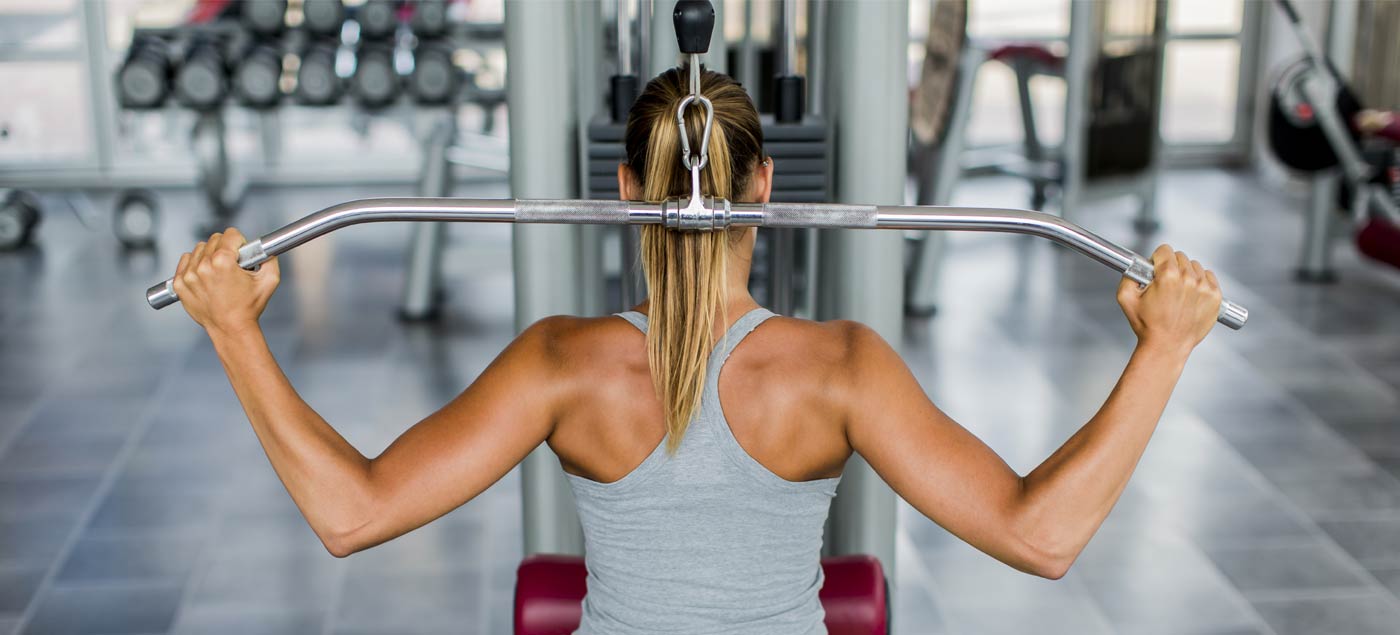Why You Need to Avoid Behind the Neck Press & Pull Downs
3rd Jul 19

Performing the lat pull down and the shoulder press behind your neck is not an uncommon practice in the gym, by any means. You always see someone doing it. It’s one of the most common mistakes in the gym in all honesty. Does that mean you should be doing them? Probably not.
It is difficult to argue that with proper form involved, these exercises are not some of the most effective exercises for working their intended muscle groups. That much is true. BUT that doesn’t mean you should have them in your workout from the get-go. They are extremely easy to get wrong if you aren’t careful. After all, they require a lot of changes to their regular front body exercise counterparts. Take note.
Shoulder Press

The behind the neck shoulder press is both one of the best and the worst ways to shoulder press. It’s a reasonably simplistic exercise in terms of technique. Ideally performed with a barbell, the weight is lifted vertically above the head, before relaxing and bringing the weight back down behind the head. The exercise effects entire deltoid group which is always a plus, however, the movement to get the barbell down behind the neck is where the issue can lie.
The motion itself causes external rotation of the shoulders which is likely to be the main cause of injury in this exercise, easily allowing room for damage to the rotator cuffs in the shoulders because of the movement. This is generally dependent on posture, and if yours is absolutely perfect, you may well be okay.
But chances are, it isn’t.
If your shoulders tend to be forwards rather than back all the time, we’d recommend not even attempting the behind the neck press at all. It needs a dramatically wider motion range than the frontal. The scapula can also be overstrained because of this movement, as well as other muscles like the lats even when supporting the relaxing of the muscles.
Even if you manage not to damage your rotator cuffs, you may well damage your neck because of the huge contractions it makes and the stress that that can cause. It could even result in potential hernias or disc damage. It’s just not worth it.
If you are going to attempt the behind the neck press, which we wouldn’t recommend, consider strongly the idea of performing corrective exercises first to ensure your posture and your form are both good enough to be able to do this exercise safely. It’s wise to ask a professional whether you should be doing it, or if you are performing right.
Lateral Pull Down

This is even more common than the shoulder press in the gym. The lat pull down is a fundamental lat exercise (who’d have guessed) and is great for people starting to really build strength in their back. Behind the head, however, is a minefield of potential accidents and injuries waiting to happen if you’re not perfectly on form with your technique. It is often a preferred method of exercise due to many people thinking it gives a better contraction and a better exercise for progression. Both size and strength. Despite this, studies suggest it is actually no better than when the exercise is performed in the typical frontward way.
Not only is the contraction likely to be better for the lats with the standard method, but it’s better in terms of isolation too. The behind the neck pull down variation recruits a greater effort from the biceps and the pectoral muscles. That takes away the significance of the contraction from the lats. This, in turn, makes it a much less effective exercise.
Much like most behind the neck exercises, the behind the head pull down also has adverse effects on the rotator cuffs. Mostly due to the external rotation needing to compensate for the large amounts of stress to maintain stability. That can easily lead to both short-term injuries in terms of damage to ligaments and joints, as well as long-term joint damage from repetitive strain.
Risks Vs. Benefits
Ultimately, your form needs to be absolutely perfect. On top of that, if you make sure you have no underlying injuries or conditions. This makes the exercises just too difficult to advocate. Especially when looking at the exercises in the standard variations and the negative effects of performing behind the head. From an overall point of view, it seems much more sensible to stick with the standard. Why increase so risk so much for such little reward? It’s just not worth it. Done properly, the frontal lat pull down and the shoulder press are just as good for what you need.
Before beginning any exercise or nutrition program, consult your physician, doctor or other professional. This is especially important for individuals over the age of 35 or persons with pre-existing health problems. Exercise.co.uk assumes no responsibility for personal injury or property damage sustained using our advice.
If you experience dizziness, nausea, chest pain, or any other abnormal symptoms, stop the workout at once and consult a physician or doctor immediately.










